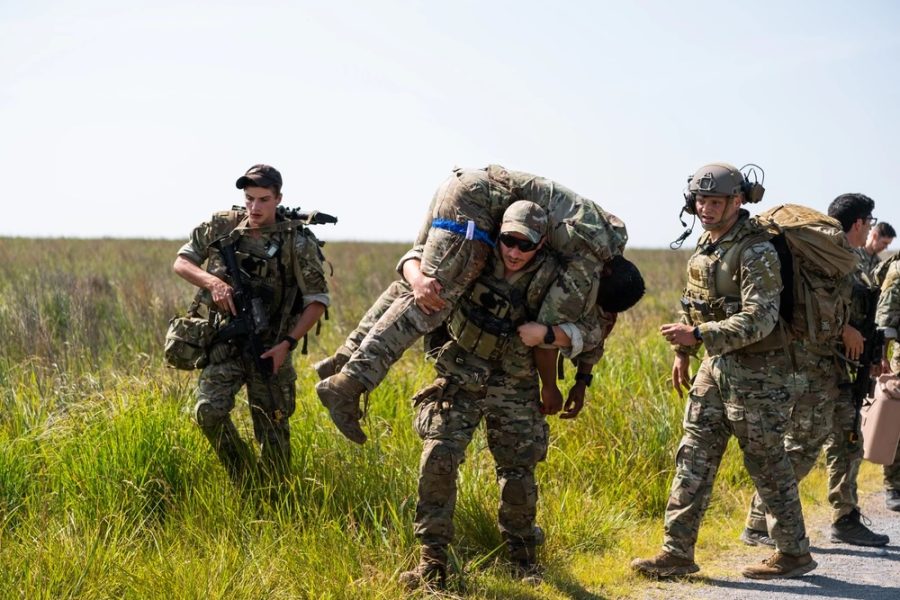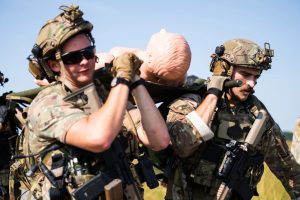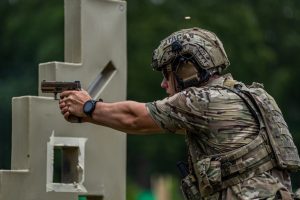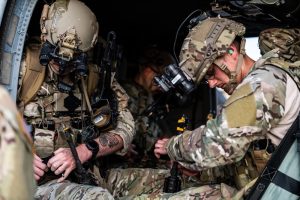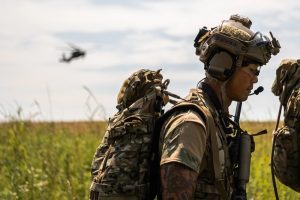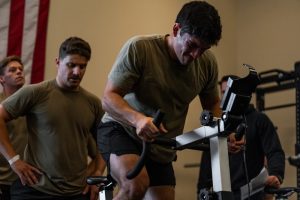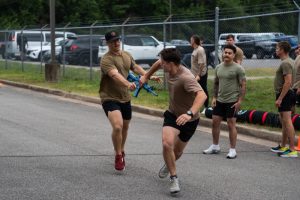If there were an Olympics for special warfare Airmen, it would probably look like the Dragon Challenge, a three-day competition at Fort Campbell, Ky., where 33 Airmen performed feats of physical strength and technical wizardry for the chance to be named the best in their career field in the 18th Air Support Operations Group (ASOG).
The Airmen came from three career fields: Tactical Air Control Party (TACP), intelligence, and special warfare mission support (SWMS). TACPs are experts in air-to-ground communication who embed with ground troops to call in air strikes and other forms of air support. The intelligence Airmen assigned to the 18th ASOG help paint the situational awareness picture for TACPs by performing surveillance and reconnaissance duties and data analysis.
Meanwhile, SWMS Airmen provide logistics, radio, cyber, supply, life support, and vehicle management to “sustain the TACP weapon system,” Capt. Katie Tamesis, public affairs officer for the 93rd Air-Ground Operations Wing, told Air & Space Forces Magazine.
The annual Dragon Challenge includes teams from each of the four squadrons of the 18th ASOG (which features a dragon on its emblem). Over the three-day contest, participants pushed through physical fitness events, a job knowledge exam, shooting challenges, and a 17-hour simulated special operations mission. The Airmen vie for the title of top team in the TACP, SWMS, and Intel categories, and the top TACP team gets to represent the group in the Lightning Challenge, where teams from the entire Air Force and Air National Guard will compete to be the best TACPs in the service later this year.
The Dragon Challenge pushed participants “to their physical and mental limits,” said Tamesis. That makes the challenge feel realistic, since performing complicated tasks under the strain of physical and mental fatigue is essentially part of the job description, said Capt. Tyler Johnson, operations flight commander for the 19th Air Support Operations Squadron (ASOS).
“Potentially having to infill 20 kilometers to your objective before the mission even starts, you’re going to be tired,” he said. “Carrying all of the equipment you need to accomplish the mission over a long period of time, you have to have that endurance and that physical fitness built into your training plan.”
Practice makes perfect, and while Dragon Challenge is a competition, lives may depend on the skills it tests.
“A lot of the skills that TACP operators are trained to are perishable skills, so if you’re not constantly honing those skill sets, you’ll lose them,” Johnson said in a press release about the contest. “In order to have the advantage in the next fight, in the next major combat operation that we’re involved in, it’s important that TACPs maintain those skills.”
The simulated mission began with a helicopter infiltration to the mission site, where the competing teams dismounted and walked through simulated enemy terrain to the objective area, where Airmen gathered intelligence both with their own eyes and the help of Army Black Hawk helicopters serving as eyes-in-the-sky.
To make things more interesting, the Black Hawks later acted as enemy aircraft, which the Airmen had to avoid without being spotted. A few of the Airmen created “concealed communication notes” for relaying targeting data up the chain of command in order to develop strike packages and back down again to help with command and control. After a long night at the objective area, the teams moved to an exfiltration site, where they provided medical care for simulated combat casualties before heading home aboard the Black Hawks.
“The entire mission demonstrated the versatile command and control capabilities TACPs bring to decision makers, combatant commanders, and joint partners in a near-peer conflict and contested environments beyond close air support,” Tamesis said.
The focus on skills beyond close air support comes as the broader Air Force prepares for a near-peer conflict—and may drastically reshape the TACP career field. As first reported by Air Force Times, the service plans to cut its TACP workforce (including enlisted, officers, and civilians) from 3,700 slots to 2,130 by 2025, a 44 percent drop.
The drop in TACP personnel coincides with the gradual retirement of A-10 Warthog close air support jets, which Air Force officials say would not survive sophisticated air defenses in a potential conflict with a near-peer adversary such as Russia and China.
Still, the uncertain future did not seem to affect the effort the TACPs put into Dragon Challenge.
“I get chills, I honestly do,” Col. Richard Kovsky, commander of the 18th ASOG, said in the press release. “These guys are taking it really seriously, you look around and you see them, you know, a little bit nervous, and then they’re out there, they’re on showcase … everybody’s watching.”
At the end of the contest, the 19th ASOS took the title of best overall team, best TACP team and best SWMS team. The 14th ASOS won best intel team, and Staff Sgt. Daniel Edgar of the 15th ASOS took the title of top performer.
